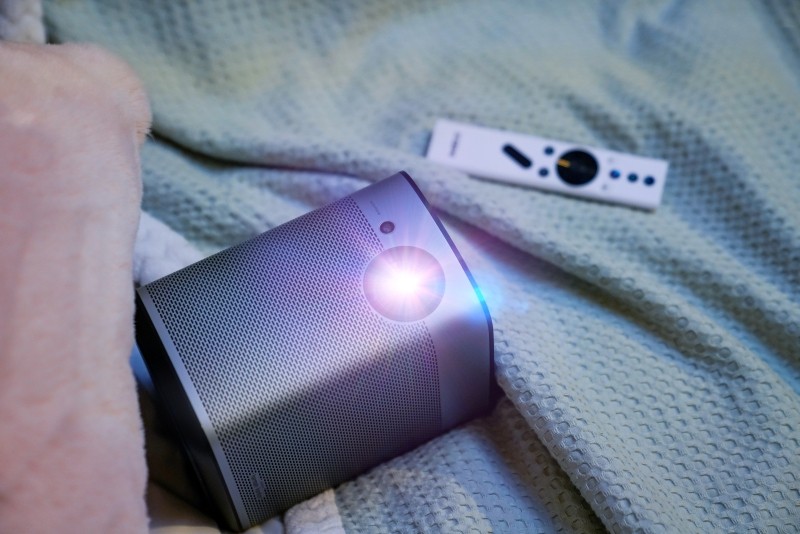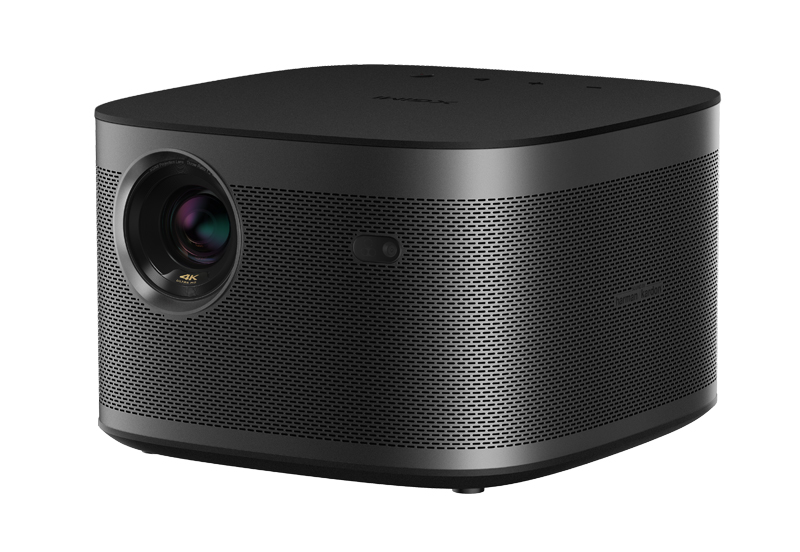Epson announced today that it has reached a settlement with projector maker XGIMI that calls for the company to revise downward its brightness claims for four of its models.
According to an Epson statement, XGIMI has "agreed to correct quoted projector lumens worldwide from previously misstated lumens to reflect accurate brightness claims" for the XGIMI Horizon Pro, Horizon, Halo, and Elfin projectors.


The Horizon Pro 4K projector and Horizon 1080p sister model have gone from an originally claimed 2,200 ANSI lumens to a stated 1,500 ISO21118 lumens. ProjectorCentral's measurement of a single Horizon Pro sample for our review resulted in a maximum measured brightness of 1,521 ANSI lumens.
The XGIMI Halo has been revised from an originally claimed 800 ANSI lumens to 600 ISO lumens. ProjectorCentral's reviewer measured 642 ANSI lumens on our sample.
Similarly, the XGIMI Elfin portable, orignally spec'd at 800 ANSI lumens, has been revised to 600 ISO lumens. The brightest measurement on our review sample came in at 712 lumens.
Epson did not describe the specific accusation lodged in its complaint against XGIMI. But its prior actions against numerous projector manufacturers, most recently Amazon seller Wemax, have charged deceptive advertising practices that put Epson and other competitors at a disadvantage due to inflated brightness claims which either overstated an ANSI or ISO lumen spec or used an unrecognized measurement. Back in July, Epson announced a settlement that forced Wemax to revise the spec on its Nova UST laser TV projector from 2,100 to 1,300 ANSI lumens.
Notably, XGIMI appears to have moved wholly to using ISO lumens, the internationally recognized standard preferred by Epson, rather than ANSI or the new CVIA lumens measurement promoted by the Chinese Video Industry Association. As of observations made this past weekend, XGIMI's U.S. website reflected ISO lumen measurements for all of its listed projectors, including revised brightness for some models not mentioned in Epson's settlement announcement. The Halo+, for example which was cited at 900 ANSI lumens when we tested it late last year, is now specified at 700 ISO lumens. Our review sample measured 753 lumens. XGIMI's newest flagship projector, the recently launched Horizon Ultra, was cited as delivering 2,300 ISO lumens, a figure we have yet to verify with testing. Wemax, for its part, agreed only to use ANSI in its own settlement with Epson.
In Epson's statement, Mike Isgrig, the company's VP for consumer sales and marketing, said that "When projector brands use internationally published standards for lumens ratings, it is consumers who are the winners. XGIMI's actions to correct lumens claims for several of their projectors helps to ensure consumers know what to expect in projector brightness performance and gives them the information needed to make more informed buying decisions, ultimately impacting the entire marketplace positively."
Epson's action against XGIMI is at least the 10th in five years the company has reportedly taken against competitors in its crusade to even the playing field and provide consumers with a a singular brightness measurement standard that allows fair comparison among products. In the unregulated projector industry, most legitimate industry players have relied on ANSI IT7.228-1997, a standard originally developed by the American National Standards Institute that relies on a 9-point measurement reflecting a projector's averaged brightness across the screen. ANSI is slowly being supplanted by ISO21118:2020, an internationally recognized standard from the International Organization for Standardization that, like ANSI, uses a 9-point measurement on a full-brightness, full-frame white test pattern.
Need a Lamp for Your Projector?
Browse ProjectorCentral's hand-picked list of Certified Lamp Sellers to find the right lamp at the best price.
Shop Lamps
A more recent development is the adoption by several Chinese manufacturers of CVIA lumens, introduced by the Chinese Video Industry Association. This is also based on a 9-point averaged measurement but comes with additional qualifications on color temperatue and other criteria. CVIA lumens are therefore not equivalent to ANSI or ISO and do not provide a basis of comparison against the industry's two prevalent measurement standards. So far, in ProjectorCentral's limited recent experience testing projectors specifying CVIA lumens, such as for the JMGO N1 Ultra, our measured ANSI lumens has come in marginally higher than the stated CVIA lumens spec.
I am far more impressed when a company says 1,500 CVIA lumens. That almost always means that I can get that much brightness while still having a fairly color accurate image on screen.
In Projector Central's own testing, we often see ANSI measurements that are fairly close to claimed brightness by the manufacturer, but then have to read the details to find out that at that brightness the image was super green and completely unusable, so you had to make it 25% less bright to get a 'usable' mode. If ANSI isn't usable or color accurate, then all it creates is another game of manipulation. DLP projectors have played this for years with their 'clear segment' on the color wheel to boost ANSI brightness while not having decent color accuracy at all.
Epson continues to fight a good fight here. But, it is still time for an update to a very poor system of measurement.






